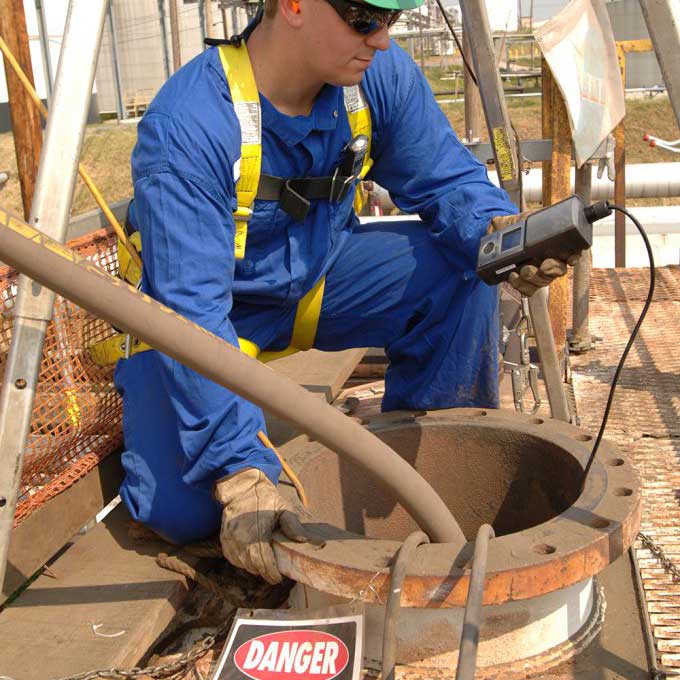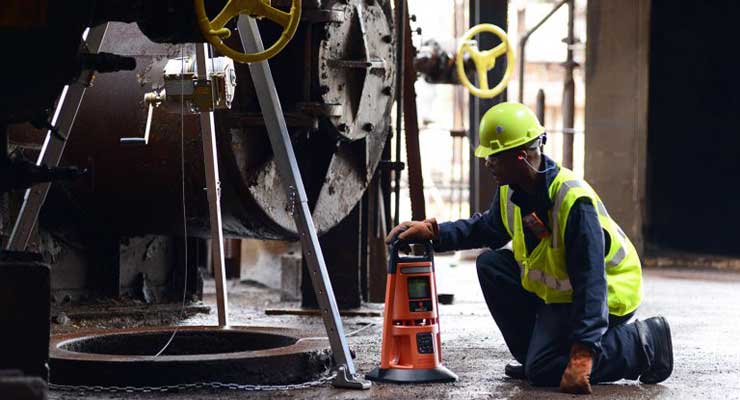Confined space gas detectors save lives, but only when we solve *this* communication problem and understand how to properly rescue those we cannot reach.
A quote from the 1967 film “Cool Hand Luke” perfectly sums up the problems we all face with confined spaces…
“What we’ve got here is failure to communicate. Some men you just can’t reach.”
Approximately 60% of all deaths in confined spaces are rescuers[1], because the people inside the space can’t communicate the dangers within.
According to a U.S. National Institute for Occupational Safety and Health study, the majority of these deaths were because of atmospheric hazards. People died because they didn’t know the atmosphere they were about to walk into was filled with deadly concentrations of gas.
The best way to eliminate atmospheric-related deaths in confined spaces is through proper use of gas detection and leveraging technology to communicate those hazards to all would-be rescuers.
We need to solve our communication problem and understand how to properly rescue those we cannot reach.

A confined space attendant’s job can be made easier with wireless gas detectors.
Failure #1: No real-time Peer-to-Peer gas hazard communication
Gas detectors have traditionally been very good at alerting the wearer about hazards. However, they have been terrible at letting anyone else in the work group know about these hazards.
Given the statistics on confined space deaths, shouldn’t rescuers know about those atmospheric conditions before entering and attempting rescue? And shouldn’t the attendant know about the entrants’ readings in real time anyway?
There have been huge advances in wireless communication with gas detectors. But while devices that communicate the readings to a remote person via the internet could provide benefit, it does absolutely nothing for those in the immediate work group who could become one of the “would-be” 60% of rescuers mentioned above.
Peer-to-peer gas detection communication, such as Industrial Scientific’s LENS™ Wireless technology, is the best way to let those who would be in immediate danger know of the hazard, so they can make the best decisions in real time.
Additionally, technologies like LENS allow for communication between personal and area gas detectors. This means users can easily place these detectors in confined spaces and communicate gas information without a person having to be in the atmosphere to begin with.
Simple communication investments can be made to easily engineer these ad-hoc networks to deliver the critical information to those whose lives depend on it most.
Failure #2: Not following the 2-by-2 rule
Before entering confined spaces, it is common sense and accepted knowledge that workers should test the atmosphere before entry. But HOW to do that is one of the most commonly misunderstood aspects of proper gas detector use.
To outline this juxtaposition, let me use a common example…
If you were fishing, would you immediately reel in your line if no fish bit, then determine no fish were there? No! Well why is that?
We all know that fishing is a process. It takes time, skill and patience to catch what you are really looking for, right? Then explain to me why so many people think that they can drop a line of tubing into a space, wait a few seconds, then immediately determine that space is safe?
The 2-by-2 Rule was established to give simple, clear guidance in determining whether a space is safe. The rule states that it takes 2 minutes of sampling time PLUS… 2 seconds for every foot of tubing.
Here is a common scenario…
If sampling a 10 ft space with 20 ft of tubing attached, how long would that take to do the first sample?
Answer: 2 minutes and 40 seconds. That is 2 minutes plus 2 seconds per foot (20 feet of tubing). And keep in mind, that is per stratum.
Please stop “reeling in” your tubing so quickly. Proper testing takes time, skill, and patience. Use this time to be aware of all the other dangers you are about to face when entering this space.
Failure #3: Lowering gas detectors down on strings
I know this might offend those who routinely practice this, but come on folks. It’s 2018 and the best you can do to test the atmosphere is attach a key piece of safety equipment to a string or rope?
Please, just stop.
Properly using a gas detector with a pump (either integral or attached) is by far the best way to see the real-time readings and accurately sample the space. Otherwise you are unable to properly see the gas readings in real time or prevent the monitor from unnecessary damage.
Even worse, you could risk a life by attempting to rescue a monitor that was dropped into the space. Let’s hope you brought a backup monitor in that case!

Using confined space gas detectors to continuously monitor a confined space helps ensure atmospheric conditions do not unknowingly become hazardous.
Failure #4: Lack of continuous monitoring
Just because you obeyed the 2-by-2 rule and determined the atmosphere to be safe before you entered doesn’t mean the atmosphere is now static and won’t change.
Often the work being performed in confined spaces dynamically changes the environment by disrupting old components and introducing new ones.
The only way to be certain the atmosphere is always safe is to continuously monitor.
Just because you put a blower in the space to ventilate doesn’t mean that…
- The air being blown in is clean (especially when it is near an exhaust), or
- The airflow is proper and can mitigate any hazards.
Please take time this month to review your program for confined spaces and go through the scenario of an atmospheric incident. Put yourself in the shoes of the person who is about to enter a fatal atmosphere… did they check a box during training? Or do they have the proper entry habits?
Now put yourself in the shoes of their co-workers/friends whose minds would be racing to help save them. Do they have all the information they need about this environment in real time?
We don’t have to accept a failure to communicate as the norm for deaths in confined spaces. We can leverage technology and best practices to eliminate death on the job.
If you’d like to enquire about wireless gas detectors, here’s what to do…
- Email gas@entec.co.nz, or
- Phone (06) 758-3030 ext 2 to talk to a wireless gas detection expert.
Want to read more about wireless connectivity in confined spaces? Check out the article “How are wireless gas detectors changing confined space entries?”
[1] https://www.cdc.gov/niosh/docs/94-103/pdfs/94-103.pdf?id=10.26616/NIOSHPUB94103
A version of this article first appeared at Industrial Scientific’s blog “The Monitor” here. Revised and republished with permission.